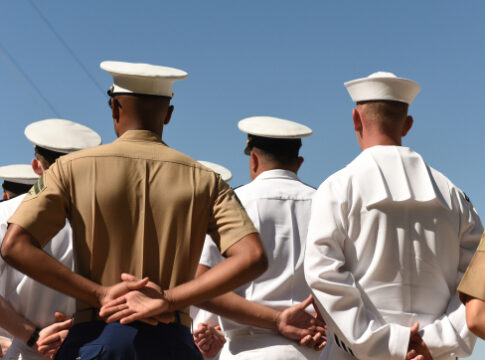First-year Naval Academy midshipmen took 2 hours, 19 minutes to complete their traditional climb of the greased Herndon Monument. Ben Leisegang, a 20-year-old from California, successfully placed the upperclassman’s hat on top of the 21-foot obelisk. Around 1,300 plebes from the Class of 2027 worked together under rainy conditions to accomplish the goal.
A Tradition of Perseverance
On May 14, the U.S. Naval Academy’s Class of 2027 faced their final challenge as plebes in the annual Herndon Monument climb. Nearly 1,300 first-year midshipmen took on the daunting task of scaling the 21-foot granite obelisk covered in thick vegetable shortening. Their mission: replace the “Dixie cup” plebe hat at the top with an upperclassman’s hat, officially marking the end of their freshman year. Despite rainy conditions adding to the difficulty, the determined group completed the challenge in 2 hours, 19 minutes, and 11 seconds.
The event turned dramatic when Ben Leisegang, a 20-year-old plebe from California, reached the top but initially failed to dislodge the Dixie cup hat. In an unexpected twist that tested the group’s resilience, the plebe hat remained in place even after Leisegang had placed the upperclassman’s cover on top. Undeterred, the plebes quickly regrouped, sending Leisegang back up their human pyramid, where he successfully knocked down the Dixie cup and secured the upperclassman’s hat properly in position.
U.S. Naval Academy freshmen, known as plebes, attempt to scale the 21-foot greased monument to knock off a “dixie cup” hat and replace it with an upperclassman’s hat at the annual Herndon Monument climb at the U.S. Naval Academy. 📷: @KaylaBartkowski pic.twitter.com/N2GmrwC64i
— Getty Images News (@GettyImagesNews) May 14, 2025
Military Teamwork on Display
The Herndon climb serves as more than just a celebratory ritual—it’s a carefully designed test of military cohesion. First-year midshipmen must form human ladders and pyramids to reach the monument’s summit, with those at the bottom supporting the weight of their classmates above. The liberal application of grease makes individual attempts impossible, forcing the plebes to develop innovative techniques and coordinated strategies. Even when water was sprayed onto the already slippery monument, the determination of the group never wavered.
“All I have to say is, we went out there. We executed on the controllables, and that was working together. Let’s go!” Ben Leisegang
Academy Superintendent Vice Adm. Yvette M. Davids congratulated the class following their achievement and formally introduced Leisegang to the crowd. The moment represented not just personal victory for the plebe who reached the top, but collective accomplishment for the entire class that supported him. This tradition exemplifies the Naval Academy’s emphasis on unit cohesion over individual heroics—a core value for future naval and marine officers.
Their goal seems simple enough: replace the pleb cover, sitting atop the monument, with a Midshipman's hat. But in reality, it's no easy task.
Read more: https://t.co/g7QynwEERu pic.twitter.com/l154dbwIEj
— WMAR-2 News (@WMAR2News) May 14, 2025
Rich History of the Herndon Climb
The Herndon Monument climb began in 1940 and has evolved over decades into one of the most recognized military academy traditions in America. The placement of an officer’s cap was introduced in 1947, with the addition of grease in 1949 to increase the challenge. Times for completion have varied dramatically throughout history—from a lightning-fast 1 minute, 30 seconds in 1969 to over four grueling hours in 1995, demonstrating how each class develops its own approach to the problem.
The monument itself honors Commander William Lewis Herndon, who went down with his ship, the SS Central America, in 1857 after ensuring all women and children aboard were safely evacuated. His sacrifice exemplifies the core values of duty and honor that the academy strives to instill in its midshipmen. For the plebes who complete the climb, the tradition connects them to generations of naval officers who have faced the same challenge, creating a timeless bond of shared experience and mutual respect.


